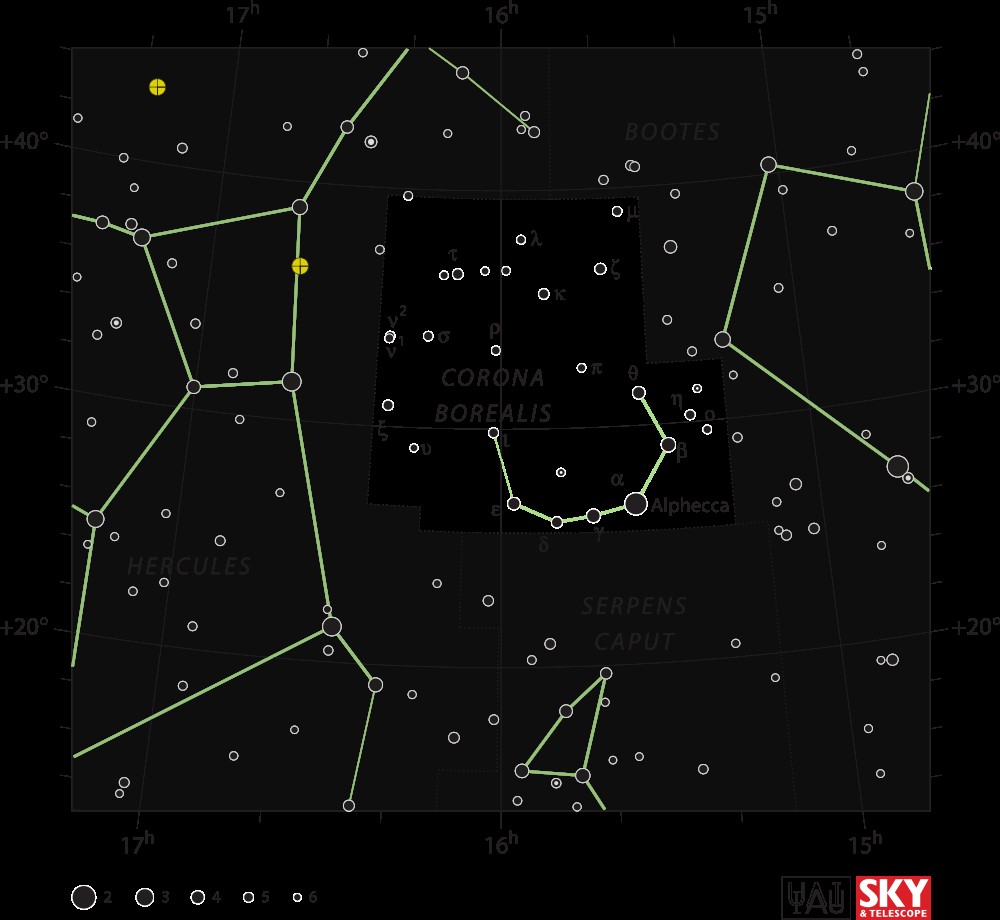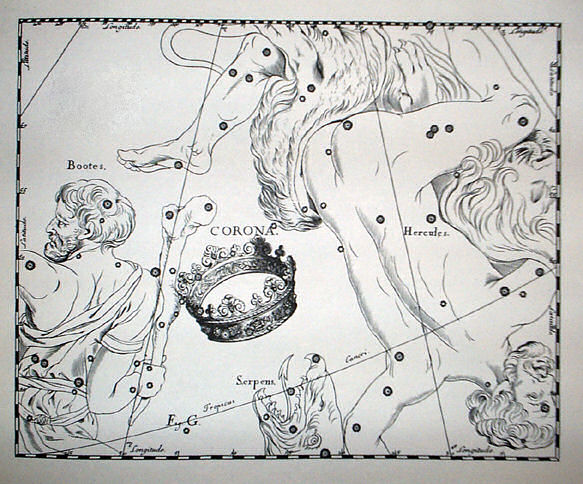
By IAU and Sky & Telescope magazine (Roger Sinnott & Rick Fienberg) [CC-BY-3.0], via Wikimedia Commons
"The Northern Crown"

By IAU and Sky & Telescope magazine (Roger Sinnott & Rick Fienberg) [CC-BY-3.0], via Wikimedia Commons
Abbreviation: CrB
Genitive: Coronae Borealis
Constellation family: Ursa Major
Nearest constellations: Boötes, Hercules, and Serpens
Right ascension: 15.89h
Declination: 32.19°
Visible between latitudes: +90° and -15°
Square degrees: 179
Luminary: Alphecca (Alpha Coronae Borealis)
Named stars: Alphecca, Nusakan
Notable deep sky objects: Corona Borealis Galaxy Cluster (Abell 2065)
Corona Borealis is a small constellation located in the Northern Hemisphere that is best seen in July.

By Johannes Hevelius [Public domain], via Wikimedia Commons
In Greek mythology, Corona Borealis represents a crown forged by Hephaestus and given to Ariadne, daughter of King Minos of Crete. Every seven years King Minos would gather seven men and seven women to be placed in a labyrinth containing the Minotaur, a creature that was half-man, half-bull and ate human flesh. Theseus was one of the men chosen to be sacrificed in the labyrinth, but he had the affection of Ariadne who gave him a ball of string to unwind that would mark his passage through the maze.
Theseus successfully killed the Minotaur and emerged from the labyrinth by following the string; he and Ariadne were then engaged to be married. Whether this resulted in a happy marriage varies depending on the source of information. Some describe Theseus as abandoning Ariadne on an island after their marriage or slipping away before their wedding day, and there are also stories involving Ariadne marrying the god Dionysus instead of Theseus.
NGC 6085 and NGC 6085 (a spiral and an elliptical galaxy):

By Adam Block/Mount Lemmon SkyCenter/University of Arizona [CC-BY-SA-3.0-us], via Wikimedia Commons